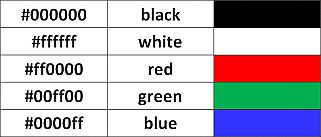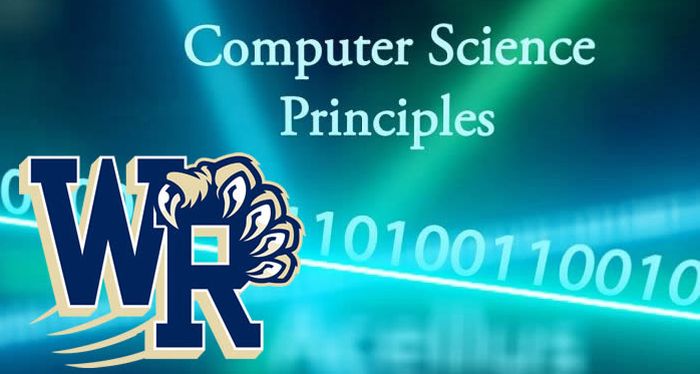
--Online Distance Learning Assignments and Information--
AP Test Information
Section I: End-of-Course Multiple-Choice Exam- Thursday May 14, 2026 at 12pm in the WR Gym.
70 Multiple-Choice Questions | 120 Minutes | 70% of Score | 4 answer options
57 single-select multiple-choice
5 single-select with reading passage about a computing innovation
8 multiple-select multiple-choice: select 2 answers
Section II: Create Performance Task- Project Due Tuesday April 30, 8:59pm PST.
30% of Score
Students will develop a computer program of their choice. Students need at least 16 hours of in-class time to complete.
Written Response questions about Your Code on AP Exam Day.
AP Computer Science Principles Period Information
Period 1 |
Period 3 |
Period 5 |
Code.org Class Code-
WVVJFZ |
Code.org Class Code-
GSPMBR |
Code.org Class Code-
HQCCDS |
AP Test Class Code-
XDM32L |
AP Test Class Code-
QJJXWY |
AP Test Class Code-
G9X2MA |
2025-2026 Assignments, Help, and Information
Week 16 |
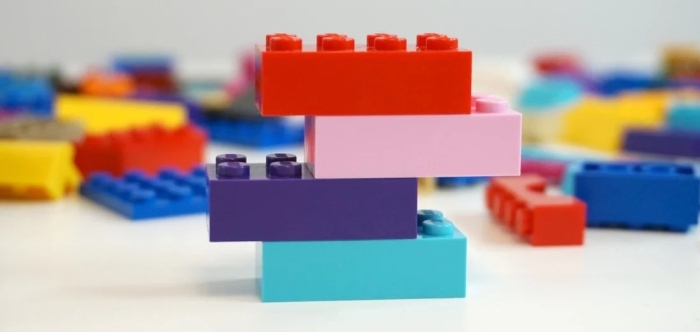
Day 37- Tuesday December 2
Unit 3 Lesson 4- The Need for Programming Languages
In this lesson students explore the challenges of clearly communicating instructions. They build a small arrangement of blocks (LEGO® pieces) and then create text instructions a classmate could follow to construct the same arrangement. Groups then trade instructions to see if they were clear enough to allow reconstruction of the original arrangement. The wrap-up discussion is used to highlight the inherent ambiguities of human language and call out the need for the creation of a programming language which leaves no room for interpretation.
Coach B Google Slides Presentation- LEGO Activity
Coach Burrill LEGO City (For your viewing pleasure...)
Complete Lesson 4- One Question (3pts)
Start on Lessons 5 & 6 (Thursday) if you have time...

Day 38- Thursday December 3
Unit 3 Lesson 5- Intro to Programming
Students use and modify a series of simple apps to get familiar with a small set of programming commands. They observe the way the code runs by slowing down the code and compare programs that run all at once to those that respond to user actions like buttons clicks. At the end of the lesson students discuss what they observed and are introduced to some key vocabulary for describing the running of programs.
- Development Process - the steps or phases used to create a piece of software. Typical phases include investigating, designing, prototyping, and testing.
- Program - a collection of program statements. Programs run (or “execute”) one command at a time.
- Program Statement - a command or instruction. Sometimes also referred to as a code statement.
- Sequential Programming - program statements run in order, from top to bottom
- Event Driven Programming - some program statements run when triggered by an event, like a mouse click or a key press
Coach B Lesson 5 Google Slides Presentation
Complete Lesson 5 (3pts)
Unit 3 Lesson 6- Debugging
In this lesson students practice using the different programming concepts that they were introduced to in the last lesson. To begin, however, they are introduced to the concept of debugging and are encouraged to use and reflect on this practice throughout the lesson. At the end of the lesson students share their experiences debugging as well as an new realizations about programming.
- Comment - form of program documentation written into the program to be read by people and which do not affect how a program runs
- Debugging - Finding and fixing problems in an algorithm or program
- Documentation - a written description of how a command or piece of code works or was developed
Video- How to Debug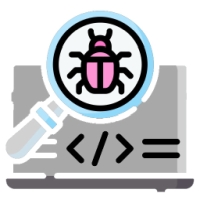
Coach B Lesson 6 Google Slides Presentation
Complete Lesson 6 (3pts)
Intro to App Design Quiz on Monday- 10pts
1st Semester Final Exam Review Next Week!
|
Week 15 |
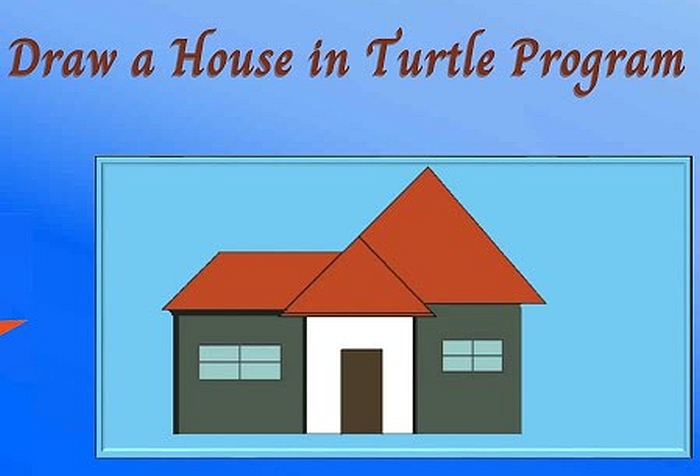
Day 34- Monday November 17
1 Hour to Finish House Project- 25pts
Present House Project
Turtle Programming Quiz Wednesday- 15pts

Day 35- Wednesday November 19
Turtle Programming Quiz- 15pts
Unit 3 Lesson 1- Intro to App Design
Students explore and investigate what makes an app an app. They begin by looking at and discussing five different apps. Following this, students watch a video explaining the basics of how computers work. Finally students return to the apps and consider the various inputs and outputs.
Input => Storage => Process/Algorithm => Output
- Input - data that are sent to a computer for processing by a program. Can come in a variety of forms, such as tactile interaction, audio, visuals, or text.
- Output - any data that are sent from a program to a device. Can come in a variety of forms, such as tactile interaction, audio, visuals, or text.
- User Interface - the inputs and outputs that allow a user to interact with a piece of software. User interfaces can include a variety of forms such as buttons, menus, images, text, and graphics.
Video- How Computers Work (5min)
Complete Code.org Unit 3 Lesson 1 (3pts)
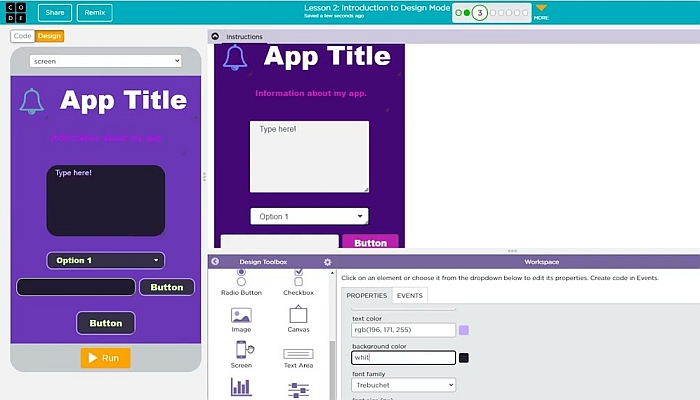
Day 36- Friday November 21
Unit 3 Lesson 2- Introduction to Design Mode
Students work through a progression of levels to build an understanding of how to use Design Mode to layout an app. The final level has students setting up the screen of an app by attempting to copy an image of an app.
- What is the function or purpose of the app?
- What elements collect input?
- What elements display output?
- Do you think there are elements that can do both?
 YouTube Help Video YouTube Help Video
Complete Code.org Unit 3 Lesson2 (3pts)
Unit 3 Lesson 3- Designing an App Part 1
This is the first in a series of lessons where students will make progress on building their own functional app.
- Students brainstorm app ideas and sketch out user interfaces in preparation for the next lesson where they will return to App Lab.
- Students continue working on the unit projects in what is primarily designed to be work time. Students continue to follow the app development process outlined in their App Development Planning Guide by transferring their user interfaces designs from their planning guides over to App Lab
Ssome websites you can find free use images besides doing a Google Image Search.
 YouTube Help Video YouTube Help Video
Complete- App Devlopment Planning Guide (5pts)
Complete Code.org Unit 3 Lesson 3 (5pts)
Have a great Thanksgiving Break!!
|
Week 14 |
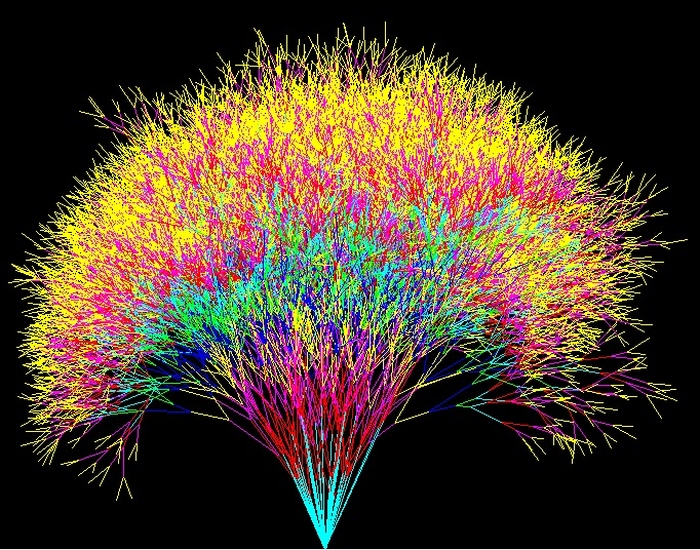
Day 33- Monday November 10
Present Digital Scene Today!
- 10 Minute Set-Up
- Magic Pen
House Project Info Rollout
Work on House Group Project (25pts, Due End of Monday November 17)
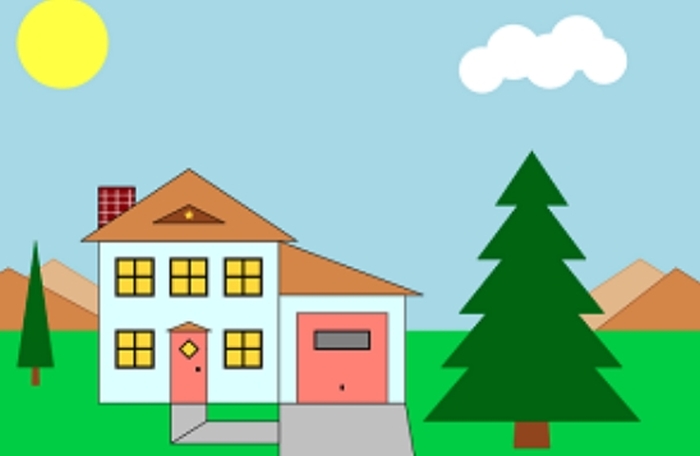
Day 34- Thursday November 13
Work on House Group Project (25pts, Due End of Monday November 17)
Code.org Turtle Programming Help Videos-
Lesson 3
Lesson 4
Lesson 5
Turtle Programming M/C Quiz Coming Soon!
- Next Wednesday
- 15pts
- Topics- AppLab, JavaScript, Functions, Randon Numbers, Loops, Parameters, and Comments
|
Week 13 |
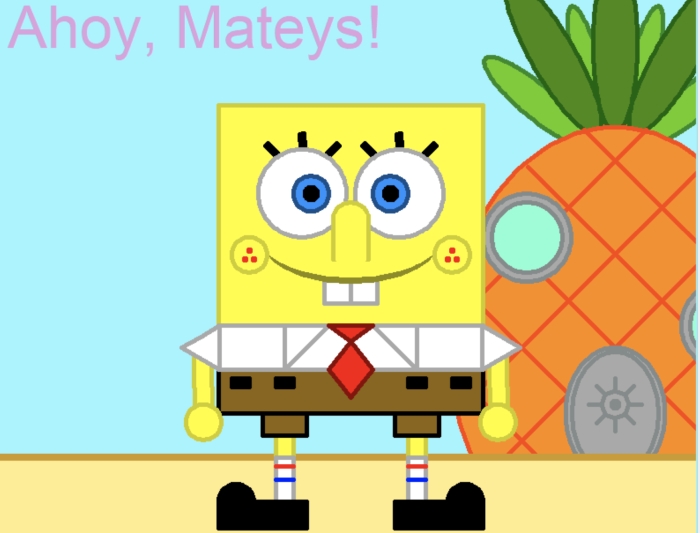
Day 31- Tuesday November 4
Work on Drawing Group Project (25pts, Due Monday November 10)
Code.org Turtle Programming Help Videos-
Lesson 3
Lesson 4
Lesson 5

Day 32- Thursday November 6
Last Day to Work on Drawing (25pts, Due Monday November 10)
Code.org Turtle Programming Help Videos-
Lesson 3
Lesson 4
Lesson 5
|
Week 12 |
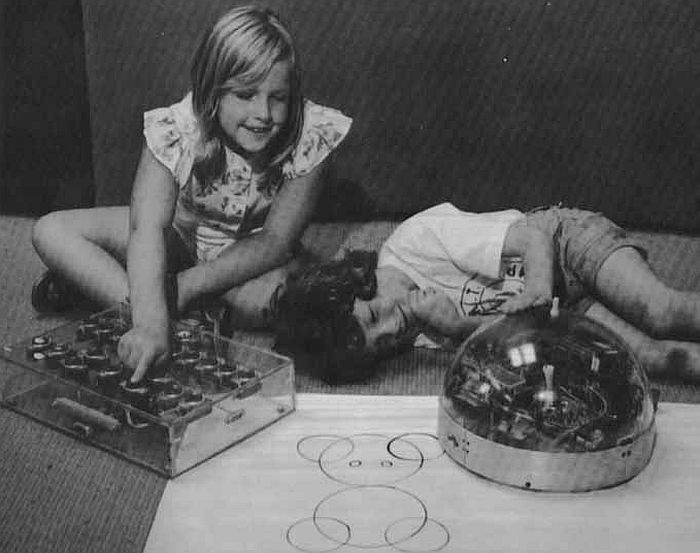
Day 28- Monday October 27
Programming! Yes! Finally!! Let's Go!!!
Coach B Intro to App Lab
- Open App Lab- There will be other App Labs to use along the way...
- Learn to use the App Lab programming environment
- Make a new project and name it
- Code, Design, Data
- 320 x 450 (x,y)
- Share your creation
- Block vs Text (JavaScript)
- Add Code to Workspace and Delete Code
- Hit the RUN button, Then hit RESET
- Run Speed- Turtle --> Rabbit
- Backup (copy) your code to a Google Doc and share with friends
Old Unit 3
Lesson 1: Using Simple Commands (3pts)
- Video- Turtle Programming (4min)
- Learn to use the App Lab programming environment
- Write a program that uses basic "building blocks" to draw an image in App Lab
- Think about what "efficiency" means when programming
Lesson 2: Creating Functions (3pts)
- Video- Defining and Calling Functions (5min)
- Define and Call Functions (Proceedures)
- Write functions with names that describe what each function does in solving the problem.
- Write a program that uses more than one function and more than one level of abstraction.
Lesson 3: APIs and Function Parameters (3pts)
- We've added a few more commands to the toolbox. At this point you have access to every turtle command provided by App Lab. As we've already seen with our exploration of functions you can combine these commands to create more complex functionality, but at the lowest level all of your code will be making use of the set of commands provided by App Lab.
=============================
Important Programming Vocab-
- Programming Language- A coding language used to dictate specific instructions to a computer.
- Programming Environment- A tool where you write and run computer programs. Ex. App Lab
- Turtle Programming - a classic method for learning programming with commands to control movement and drawing of an on-screen robot called a "turtle". The turtle hearkens back to early implementations in which children programmed a physical robot whose dome-like shape was reminiscent of a turtle.
- Algorithm - A precise sequence of instructions for processes that can be executed by a computer
- Iterate - To repeat in order to achieve, or get closer to, a desired goal.
- Boolean Condition- Using Boolean expressions (true/false) inside conditionals (if/else). Thanks to conditionals, programs can respond differently based on different inputs and parameters.
- Selection - A generic term for a type of programming statement (usually an if-statement) that uses a Boolean condition to determine, or select, whether or not to run a certain block of statements.
- Conditionals- programming element that allows a computer to make decisions depending on specific criteria. They enable a program to execute distinct code branches based on particular conditions.
- Sequencing - Putting commands in correct order so computers can read the commands.
- Abstraction: a simplified representation of something more complex. Abstractions allow you to hide details to help you manage complexity, focus on relevant concepts, and reason about problems at a higher level.
- Function (Proceedure)- a named group of programming instructions. Functions are reusable abstractions that reduce the complexity of writing and maintaining programs
- Efficiency- Can mean several deifferent things-
- It could mean the total number of primitive operations performed by the turtle.
- It could mean number of lines of code.
- It could hinge on the ability to reuse code within your own code.
- It could be about the speed and clarity with which you can write the program.
- Top Down Design - a problem solving approach (also known as stepwise design) in which you break down a system to gain insight into the sub-systems that make it up.
- API - a collection of commands made available to a programmer
- Documentation - a description of the behavior of a command, function, library, API, etc.
- Hexadecimal - A base-16 number system that uses sixteen distinct symbols 0-9 and A-F to represent numbers from 0 to 15.
- Library - a collection of commands / functions, typically with a shared purpose
- Parameter - An extra piece of information that you pass to the function to customize it for a specific need.
- A "Comment" block doesn't do anything when you run the code. It is simply a way to leave notes in code. Programmers write comments into their code for two main reasons:
- sharing code with other programmers
- remembering their own thoughts or plans for code they write.

Day 29- Wednesday October 29
| I am not at school today. There are 2 Lessons for you to complete. Help each other as needed. Use Closed Captions for the 2 short videos. Friday we will start our group coding project. Please be ready! |
Old Unit 3
Lesson 4: Creating functions with Parameters (3pts)
- Video- Functions with Parameters
- Identify situations for creating functions with parameters.
- Incorporate functions with parameters into an “Under the Sea” digital scene.
- Test functions with parameters using random input.
- New Blocks-
Lesson 5: Looping and Random Numbers (3pts)
- Video- Using Loops
- Introduction to the for loop.
- Practice using loops to draw figures.
- Use loops in conjunction with Top-Down Design and random values to complete a digital scene.
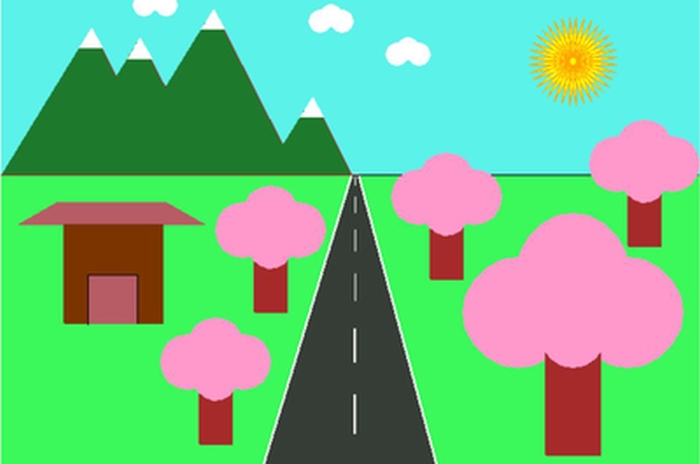
Day 30- Friday October 31
Happy Halloween!
Student Favorite- Drawing Group Project! (25pts, Due Monday November 10)
Code.org Turtle Programming Help Videos-
Lesson 3
Lesson 4
Lesson 5
|
Week 11 |

Day 26- Tuesday October 21
Sign-Up for 2026 AP Exam Here
- Follow directions on Website
- Per 1- AP Class Code- XDM32L
- Per 3- AP Class Code- QJJXWY
- Per 5- AP Class Code- G9X2MA
Coach B Review Project- 5pts
- 1-3 Students
- Create a Google Form in "Quiz" Format
- Make me (Casey Burrill) a Collaborator / Editor
- Decide on a Team Name- Place Team Name in Form Description
- Create 30-35 MC Questions- Make Them 1 point each
- Need the answers marked
- I will be using some questions that students create for our test on Thursday
- You may use any tech (or no tech) you want to create your Quiz, but must be in a Google Form format
- End of class, the Coach B Shootout- Extra Credit 1, 3, and 5pts available for 1st, 2nd, and 3rd place
- Test Thursday- 50 questions, 50 points
Available Unit Topics- Google Headquarters, Google Data Center, Misleading Graphs, Google Trends, Apple Headquarters, Apple Products Timeline, Big Data, Open Data, Crowdsourced Data, Citizen Science, Volume, Velocity, Variety, Value, Veracity, Hadoop, Distributed File System, Parallel Processing, Folding at Home, Machine Learning, Supervised Learning, Email Spam Filtering, Predictive, Text, Image Classification, Credit Card Fraud Detection, Unsupervised Learning, Recommendation Engines, Customer Segmentation, New Categorization, Anomaly Detection, Reinforcement Learning, Self-Driving Cars, Game AI, Robotics, IBM Watson, Jeopardy Challenge, Artificial Intelligence, Weak Artificial Intelligence, Strong Artificial Intelligence, AI/ML Bias, Strong Passwords, Privacy Policies, Terms of Use, Privacy Policy Helpful Words to Look For, Facial Recognition, Personally, Identifiable, Information, Computer Virus, Malware, Keylogging, , Phishing, Spear Phishing, Ransomeware, DDoS Attack, Solarwinds, Encryption, Decryption, Public Key, Private Key, Caesar Cypher, Data Breaches, LA School District Hack, TikTok Hack, Moneyball Movie Characters and Plot
Team Winners- USC

Day27- Thursday October 23
Test Day- 50 Questions, 50 Points
|
Week 10 |

Day 23- Monday October 13
Sign-Up for 2026 AP Exam Here
- Follow directions on Website
- Per 1- AP Class Code- XDM32L
- Per 3- AP Class Code- QJJXWY
- Per 5- AP Class Code- G9X2MA
1- Quiz Today- 10pts
2- Review Last Class...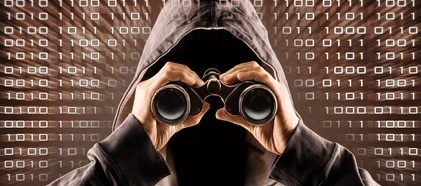
3- Famous/Infamous Coach Burrill Stalking Assignment!
- 5pts, 8pts to best project and 3pts to worst project each period (Coach B Decision)
- 30 minutes to complete
- May use any device you want
- 1-2 People
- Need 1 blank piece of paper (Grandma's Table)
- Front Side- Draw Coach B Picture, Your Names, Period
- Back Side- Coach B Personal Info
- Unique info, not what normal student would know
- Quality better than quantity
- Hand drawn picture and hand written info, no printouts
- Make sure Coach B gets your paper
4- Encryption and Data Protection
5- Data Breaches-
- Use this Website- World's Biggest Data Breaches & Hacks
- Pick a Data Breach and research it some more
- Make a 3 page Google Slides presentation including the following Info (5pts)
- Share with Coach B, not his brother...
- 1-3 People Per Presentation
- Link to at least 2 articles about your Data Breach
- List date, time, and company name of the Data Breach
- What was taken in the Data Breach
- What was the estimated cost of the breach
- Was there any ransom paid
- How were customers effected
- Anything else we should know

Day 24- Wednesday October 15
Moneyball- Data and Baseball
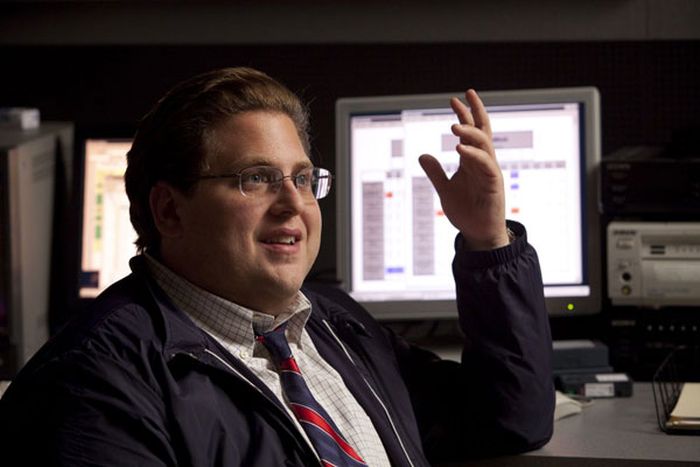
Day 25- Friday October 17
Sign-Up for 2026 AP Exam Here
- Follow directions on Website
- Per 1- AP Class Code- XDM32L
- Per 3- AP Class Code- QJJXWY
- Per 5- AP Class Code- G9X2MA
- Follow directions on Website
Finish Moneyball
Article- Moneyball True Story: How Accurate The Baseball Movie Is
- One of the most significant difficulties that the A's face is retaining talented players, who are often lured away by teams like the New York Yankees, who had a budget of $115 million, almost triple that of the A's $40 million.
- Art Howe & Billy Beane's Disagreements Were More Professional In Real Life
- Moneyball's Bill James Really Was Hated (& Is Still Controversial)
- Moneyball's Peter Brand Is Fictional (But Based On A Real Person)
- Billy Beane Didn't Fire Grady Fuson In Real Life
- The Athletics Really Did Win 20 Games In A Row
- The Movie Leaves Out Some Key Players
- Coach Burrill knows 5 people personally who were in the movie
Moneyball Quiz- 8pts
Long Infamous Coach B Review Game on Tuesday
Test on Thursday Next Week (50pts)
|
Week 9 |
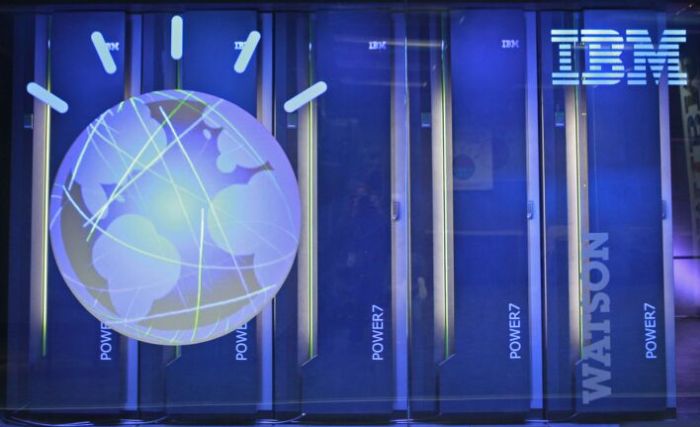
Day 21- Tuesday October 7
No Quiz Today
Sign-Up for 2026 AP Exam Here
- Follow directions on Website
- Per 1- AP Class Code- XDM32L
- Per 3- AP Class Code- QJJXWY
- Per 5- AP Class Code- G9X2MA
Artificial Intelligence-
- Since its beginning, artificial intelligence has come under scrutiny from scientists and the public alike. One common theme is the idea that machines will become so highly developed that humans will not be able to keep up and they will take off on their own, redesigning themselves at an exponential rate.
- Popular AI Tools- ChatGPT, Google Gemini, Apple Siri, Ammazon Alexa, Microsoft CoPilot, Tesla Grok, Arthopic's Claude, IBM Watson, etc...
- AI agents currently leading the market include OpenAI's Operator, Devin AI by Cognition Labs, Claude by Anthropic, and Amazon's Nova Act. Each offers unique capabilities—ranging from automating tasks to coding support—empowering businesses to work smarter and faster.
- Weak artificial intelligence embodies a system designed to carry out one particular job. Weak AI systems include video games such as the chess example from above and personal assistants such as Amazon's Alexa and Apple's Siri. You ask the assistant a question, and it answers it for you.
- Strong artificial intelligence systems are systems that carry on the tasks considered to be human-like. These tend to be more complex and complicated systems. They are programmed to handle situations in which they may be required to problem solve without having a person intervene. These kinds of systems can be found in applications like self-driving cars or in hospital operating rooms.
- Bias- Machine Learning bias, also known as algorithm bias or Artificial Intelligence bias, refers to the tendency of algorithms to reflect human biases. It is a phenomenon that arises when an algorithm delivers systematically biased results as a consequence of erroneous assumptions of the Machine Learning process Examples- Race, Gender, Economic, Religion, etc…
Coach Burrill's Claude AI Generated Artifct Explaning AI- Made the webpage using Claude in 3 minutes.
IBM Watson!-
- Video- This Computer Could Defeat You at 'Jeopardy!' Q: What is Watson?
- What is inside Watson- a cluster of ninety IBM Power 750 servers, each of which uses a 3.5 GHz POWER7 eight-core processor, with four threads per core. In total, the system has 2,880 POWER7 processor threads and 16 terabytes of RAM.
- Video- Watson and the Jeopardy! Challenge
- What is Watson being used for now- Weather Forecasting, Building Codes, Cancer Treatment, Financial Planning, Teaching Assistance Tools, Tax Preparation, Fashinon Design, and Advertising.
- Discuss Videos
AI Doc/Slides Vocab- (5pts)
- Solo or with a partner
- If pair, place both names on Doc/Slides
- Due by end of class
- Share With Casey Burrill
- Define and give an exampe
- Include pictures or graphs
- Vocab Terms and Concepts-
- Decribe Weak AI and give an example
- Decribe Storng AI and give an example
- Define Machine Learning / AI Bias and give an example
- Give discription of IBM's Watson today
- How did Watson become so good at playing Jeopardy
- List what Watson is used for today
- What AI tools do you currently use and why?

Day 22- Thursday October 9
| I am not at school today and there is a ton of new info below. Please take good notes on videos, websites, and articles. Use Closed Captions as needed. There will be a 12pt quiz on Monday next week. Please have your journal ready. One page Privacy Policy document needs to be shared with me today. 3pts. |
No Quiz Today
Sign-Up for 2026 AP Exam Here
- Follow directions on Website
- Per 1- AP Class Code- XDM32L
- Per 3- AP Class Code- QJJXWY
- Per 5- AP Class Code- G9X2MA
- Follow directions on Website
Privacy Policies-
Video- How to read privacy policies like a lawyer (6min)
- Discuss Video
- Pick a App/Website to Look at Privacy Policy - Ideas Below
- Education: Code.org, Khan Academy, Codecademy.com
- Social media: Facebook, Twitter, Instagram, Snapchat, Tik Tok
- Online store: Amazon, Target, Walmart
- Mail & communication: Gmail, Hotmail, Yahoo Mail, Skype, Google Hangouts
- Streaming sites: Netflix, Spotify, Pandora
- Gaming sites: Steam, Xbox Live
- 3pts- Create a One Page Document
- List 5 thoughts about an above Privacy Policy
- Individual Assignment- Share Google Doc with Coach B
- Due Today
Facial Recognition-
- Video- Is Facial Recognition Invading Your Privacy? (5min)

- Do the harms of giving up privacy outweigh the benefits of the technology they power.
- Key Takeaways
- Data that may not seem private, like a birthdate or zipcode, can be combined to uniquely identify you.
- Personally Identifiable Information (PII): information about an individual that identifies, links, relates, or describes them.
- Technology enables the collection, use, and exploitation of information about, by and for individuals, groups, and institutions. Geolocation, cookies, and browsing history can all be used to create knowledge about an individual. Most digital technology needs some kind of PII to work (for example street navigation needs to know your location or PII stored online to simplify making online purchases).
- Other times websites collect more data to improve their services.
- Many services and websites collect information (like your browser history) that can be used to advertise to you by creating detailed profiles of who you are and what you like. Search engines also can record and maintain a history of searches made by users. This information can be used to suggest websites or for for targeted marketing.
- Once data is made digital, and especially once it's shared online, it's much harder to control.
- PII can be used to steal the identity of a person, or stalk them online. Information that is often posted on social media can be combined to create a profile on you.
Hacks and Attacks-
- Video- The Internet: Cybersecurity & Crime (5min)
- Computer Virus- A computer virus is a program that spreads by first infecting files or the system areas of a computer or network router's hard drive and then making copies of itself. Some viruses are harmless, others may damage data files, and some may destroy files.
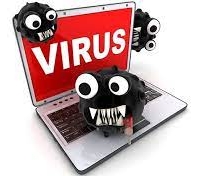
- Keylogging- The use of a computer program to record every keystroke made by a computer user, especially in order to gain fraudulent access to passwords and other confidential information.
- Phishing- The fraudulent practice of sending emails purporting to be from reputable companies in order to induce individuals to reveal personal information, such as passwords and credit card numbers.
- Spear Fishing- a type of phishing campaign that targets a specific person or group and often will include information known to be of interest to the target, such as current events, personal names, or financial documents.
- Malware- Malware (short for “malicious software”) is a file or code, typically delivered over a network, that infects, explores, steals or conducts virtually any behavior an attacker wants. And because malware comes in so many variants, there are numerous methods to infect computer systems.
- Ransomware- Ransomware is a malware designed to deny a user or organization access to files on their computer. By encrypting these files and demanding a ransom payment for the decryption key, cyberattackers place organizations in a position where paying the ransom is the easiest and cheapest way to regain access to their files.
- DDoS Attack- DDoS Attack means "Distributed Denial-of-Service (DDoS) Attack" and it is a cybercrime in which the attacker floods a server with internet traffic to prevent users from accessing connected online services and sites.
Passwords-
Journal Love!
|
Week 8 |
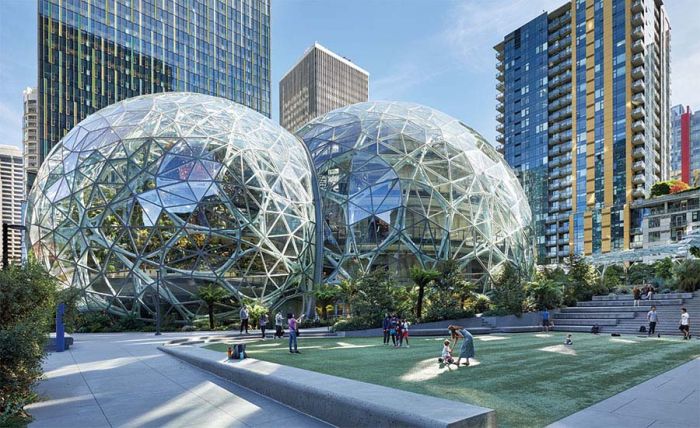
Day 19- Tuesday September 30
- Amazon-
- Big Data-
- Different Kinds of Data-
- Big Data- Collect huge amounts of data so we can learn even more from it
- Open Data- Sharing data with others so they can can analyze it
- Crowdsourced Data- Collecting data from others so you can analyze it. Also, the practice of obtaining input or information from a large number of people via the Internet
- Citizen Science- scientific research conducted in whole or part by distributed individuals, many of whom may not be scientists, who contribute relevant data to research using their own computing devices.
- Ex. Citizen science data examples include environmental monitoring data, such as counts of birds (like the Christmas Bird Count), observations of plant phenology, and water quality measurements. Other data types involve analyzing imagery (e.g., underwater videos, galaxy images), collecting audio (e.g., bat calls), and gathering social data (e.g., youth social inclusion, health effects of wildfire smoke). Data can also be generated through citizen-operated instruments for projects like air quality monitoring.
- Video- Big Data In 5 Minutes | What Is Big Data?| Introduction To Big Data |Big Data Explained |Simplilearn
- 5 V's of Big Data
- Volume
- Velocity

- Variety
- Value
- Veracity
- Hadoop Data Storage
- Hadoop storage is primarily handled by the Hadoop Distributed File System (HDFS), a scalable, fault-tolerant, and cost-effective distributed file system that stores large datasets across a cluster of hardware
- Distrubuted File System
- A distributed file system (DFS) is a system that allows multiple computers across a network to access and manage files stored on different physical machines as if they were on a single local device
- Parallel Processing
- a mode of computer operation in which a process is split into parts that execute simultaneously on different processors attached to the same computer.
Complete Unit 5 Lesson 5- 2pts
Big Data Drawing Assignment- 5pts
- Take a blank piece of paper from Grandma's Table
- Solo Project- Need a drawing from every student
- You can only draw a picture to discribe your selected vocab (No Words)
- Possible Vocab
- Hadoop
- Any of the 5 V's of Big Data
- Crowdsourced Data
- Parallel Processing
- Distributed File System
- Due at end of class- Make sure name and period are on your picture

Day 20- Thursday October 2
- Sign-Up for 2026 AP Exam Here
- Follow directions on Website
- Per 1- AP Class Code- XDM32L
- Per 3- AP Class Code- QJJXWY
- Per 5- AP Class Code- G9X2MA
- Data, Google, and Amazon Quiz today- 10pts mac
- Apple Inc

- Algorithm- An algorithm is a finite, step-by-step set of instructions designed to solve a specific problem or perform a task for a computer. Think of it as a computer's "recipe" for achieving a desired outcome from given input data. Algorithms are fundamental to computer science, forming the logic behind software programs and enabling computers to perform calculations, process data, and make decisions.
- Machine Learning-
- Machine learning (ML) is a field of artificial intelligence (AI) that enables systems to learn from data and improve without explicit programming. It uses algorithms to identify patterns in data, build models from those patterns, and make predictions or decisions on new, unseen data. The more data these models are trained on, the better they become at performing tasks and making accurate insights.
- The origin of the term Machine Learning (albeit not the core concept itself) is often attributed to Arthur L. Samuel’s 1959 article in IBM Journal, “Some Studies in Machine Learning Using the Game of Checkers.” In the paper’s introduction, Samuel neatly articulates machine learning’s ideal outcome: “a computer can be programmed so that it will learn to play a better game of checkers than can be played by the person who wrote the program.”1
- Though “machine learning” and “artificial intelligence” are often used interchangeably, they are not quite synonymous. In short: all machine learning is AI, but not all AI is machine learning.
- Supervised learning
Supervised learning trains a model using a labeled dataset, where each input is paired with the correct output. The goal is for the algorithm to learn the mapping between the inputs and outputs so it can make accurate predictions on new, unseen data.
- Email spam filtering: The algorithm is trained on a dataset of emails already labeled as "spam" or "not spam." It learns to identify patterns—like specific keywords, suspicious links, or sender information—and uses those patterns to automatically filter new incoming emails.
- Predictive text: When your phone suggests the next word in a sentence, it is using a model trained on a vast amount of text data. It learns the statistical likelihood of word sequences to accurately predict what you might type next.
- Image classification: This involves training a model with labeled images, such as a large collection of photos tagged with "cat" or "dog." After training, the model can classify new images with high accuracy.
- Credit card fraud detection: Banks train models on historical transaction data, which is labeled as either legitimate or fraudulent. The model learns to spot unusual spending patterns, locations, or purchase amounts to flag potentially fraudulent activity in real-time.
- Unsupervised learning
In unsupervised learning, the algorithm is given unlabeled data and must find its own patterns and structure. The model is not told the "correct" answer but instead finds underlying relationships on its own.
- Recommendation engines: Services like Netflix, Spotify, and Amazon use unsupervised learning to group users with similar behaviors. If users A and B have similar viewing or listening histories, the model might recommend content to user A that user B has enjoyed.
- Customer segmentation: Retailers can use clustering to group their customers into segments based on shared characteristics, such as shopping behavior, demographics, or purchase history. This allows for more targeted marketing campaigns.
- News categorization: Unsupervised algorithms can scan news articles and automatically sort them into categories like "sports," "finance," or "entertainment" without human intervention.
- Anomaly detection: In cybersecurity, unsupervised learning can establish a baseline for normal network behavior. It can then detect deviations or "anomalies" that might signal a potential cyberattack.
- Reinforcement learning
Reinforcement learning involves an "agent" that learns to make decisions by performing actions in an environment and receiving rewards or penalties. Its goal is to maximize the cumulative reward.
- Self-driving cars: Autonomous vehicles learn to make real-time driving decisions—like accelerating, braking, and steering—by processing vast amounts of sensor data. A model is "rewarded" for taking a correct action, such as staying within a lane, and "penalized" for incorrect actions, such as veering off-road.
- Game AI: Reinforcement learning is used to train computer opponents in complex games like chess or Go. The AI learns the best strategy over time by playing against itself and receiving positive feedback for winning and negative feedback for losing.
- Robotics: In a manufacturing setting, a robot can learn to perform a task through trial and error. It is rewarded for completing the task correctly and efficiently, allowing it to improve its movements over time.
- Code.org- 2pts (Complete in Class)
- Supervied- Machine learning
- Unsupervised- Machine learning
- Reinforcement- Machine learning
- 1-3 Group Slides- Machine Learning Project (5pts)
- Define and Explain Machine Learning
- Give a specific Example of Machine Learning and why it is Machine Learning IS your example Supervised, Unsupervised, or Reinforcement machine learning. Why?
- Share a Google Slides (4-5 slides) with me
- Include Pictures and Text
- Make sure everyone's name is on the first slide
- Due at end of class
|
Week 7 |

Day 16- Monday September 22
- As promised for those 10% of you who will have a life altering experience...
- Review- The cinematography rivals that of Kubrick and Hitchcock. The animation is the best I've ever seen, I mean, it's truly stunning. Avatar doesn't even hold a candle to to this. The voice is passionate and memorable. Plus, that ending is one of the most emotionally charged scenes put to film. This film is so entirely great I just can't even handle its majesty.
- Opening of the movie- For the first time in history people and machinery are working together, realizing a dream. A uniting force that knows no geographical boundaries. Without regard to race, creed or color. A new era where communication truly brings people together. This is the dawn of The Net.
- Video- Warriors of the Net (13min)
- Manuscrpipt
- Need some merch?
- New Vocab- Switch and Firewall
- Mr. B Review Game Today!
- Journal Love Time at End of Class Today
- Test Wednesday- 40pts

Day 17- Wednesday September 24
- Test- 40 points, 40 questions
Review Unit 1 Test
- Google Doc Project
- Check Your School Gmail Account for Test Results
- Review your results on your own
- Nothing to turn in
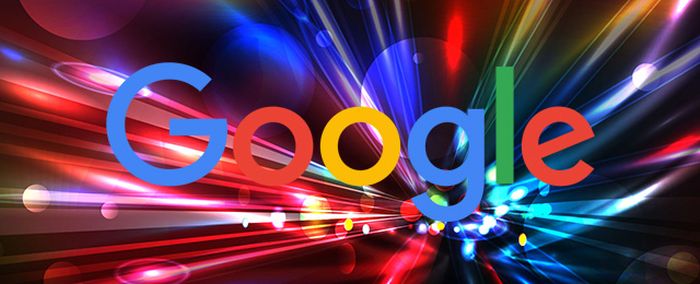
Day 18- Friday September 26
-
Unit 5 - Data ('23-'24)
In this unit learn how data analysis helps turn raw data into useful information about the world. Learn how to use data visualization to find patterns inside of data sets and learn how this data analysis process is being used in contexts like open data or machine learning to help make decisions or learn more about our world. In the unit project, you'll analyze a dataset of your choosing and present your findings.
GOOGLE Stuff
- Data Graphs
- 1-3 Group- Google Trends Project (5pts)
- Video- How to use Google Trends
- Conduct a Google Trends Data Exploration
- Make a bold statement
- Search topics using Google Trends
- List on a Google Doc info you have found to support your bold statement
- Must include a graph
- Share your Google Doc with me
- Some Trends Ideas-
- Sports
- Movies
- Music
- Famous People
- Stores
- Colleges
- Medicine
- Video Games
|
Week 6 |
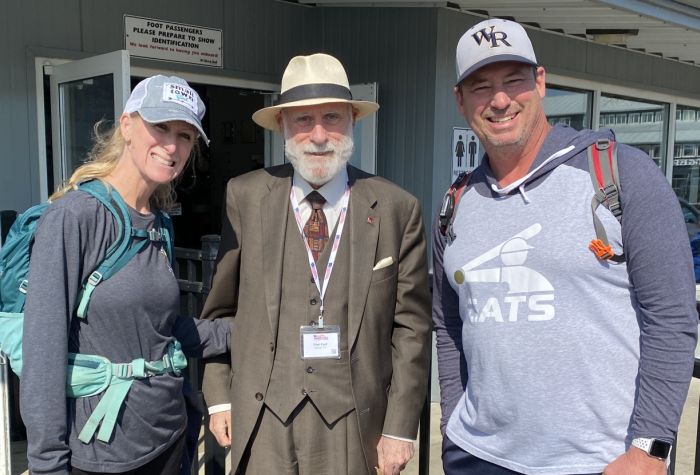
Day 14- Tuesday September 16
- Unit 1 Test Review Soon?!?!
- The Above Picture...
- Unit 2- Lesson 1
- After a short transition from representing information in Unit 1 to communicating information in Unit 2, students take time to think about their knowledge of the Internet and how it works. Following this, students are introduced to a new widget: The Internet Simulator which they will use throughout this unit to explore the inner workings of the Internet.
- The Internet
- What is the Internet?
- Vint Cerf, Bob Khan, and Paul Baron, invent a packet network
- Explore the Internet Simulator. How does it work? What can I do with it?
- Internet Simulator Time- Unit 2. Lesson 1, Section 4
- Best Class at WR (Not AP Comp Sci)

- WWW
- Unit 2- Lesson 2- Computer Networks
- Video- The Internet: Packets, Routing & Reliability (7min)
- Computing Device: a machine that can run a program, including computers, tablets, servers, routers, and smart sensors
- Computing System: a group of computing devices and programs working together for a common purpose
- Computing Network: a group of interconnected computing devices capable of sending or receiving data.
- Path: the series of connections between computing devices on a network starting with a sender and ending with a receiver.
- Unit 2- Lesson 3-
- In a previous lesson, we explored the Internet Simulator, where each of you were connected to one other person by a single wire. What are the potential problems with this setup?
- Internet Simulator Time- Unit 2. Lesson 3, Section 2
- Fav Ice Cream Flavor
- Fav Car
- Video- The Internet IP Addresses and DNS (7min)
- A Router is a networking device that forwards data packets between computer networks. Routers perform the traffic directing functions on the Internet. Data sent through the internet, such as a web page or email, is in the form of data packets. A packet is typically forwarded from one router to another router through the networks that constitute an internetwork (e.g. the Internet) until it reaches its destination node.
- Lots of Vocab- Protocols, Router, Inernet Protocol (IP), IP Addresses, ISP, IPv4, IPv6, DNS, DNS Spoofing, and DDoS
- People- Vint Cerf, Bob Kahn, Paul Baron, Steve Jobs, and Tim Berners-Lee
- Internet Simulator Time- Unit 2. Lesson 4, Section 1
- End of Class Stuff
- Finish Code.org Unit 2, Lessons 1-4 (8pts)
- Journal Love
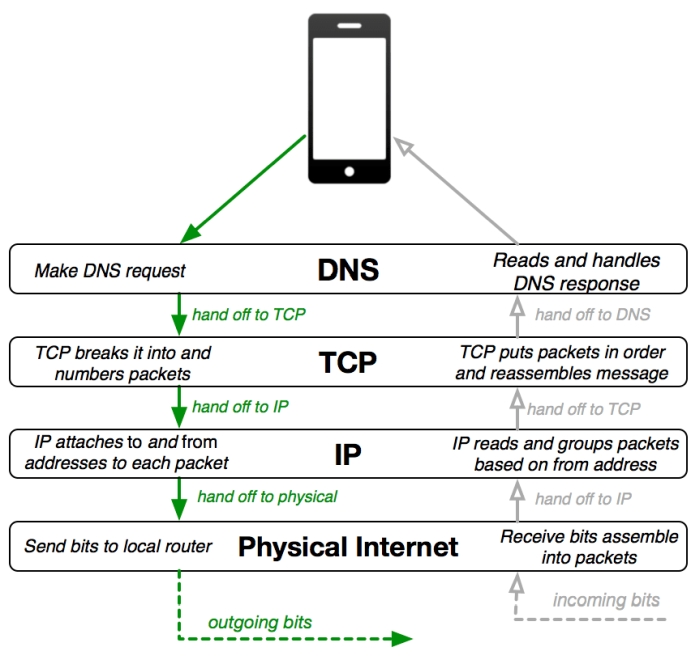
Day 15- Thursday September 18
- Internet Quiz 2 Today- 6pts
- Internet Layers
- Internet Simulator- Unit 1 Lesson 5 (3min)
- Internet Simulator- Unit 1 Lesson 6 (3min)
- Discuss- Internet Simulator
- Internet Issues- Net Neutrality, Internet Censorship, and Digital Divide

- Complete all of Unit 1 Code.org Lessons 5-7 (6pts)
- Warriors of the Net Video Next Monday! Infamous MR B Review Game!
- Test Wedneday Next Week (40pts)
- Today's Vocab- HTTP, HTTPS, HTML, URL, Web Browser, Server, Get Request, Post Request, Cookie, SSL & TLS, Digital Certificate, Layers of the Internet, Net Neutrality, Internet Censorship, and Digital Divide
- Journal Love

USC hosts Michigan State on Saturday night! Beat the Spartans!
|
Week 5 |
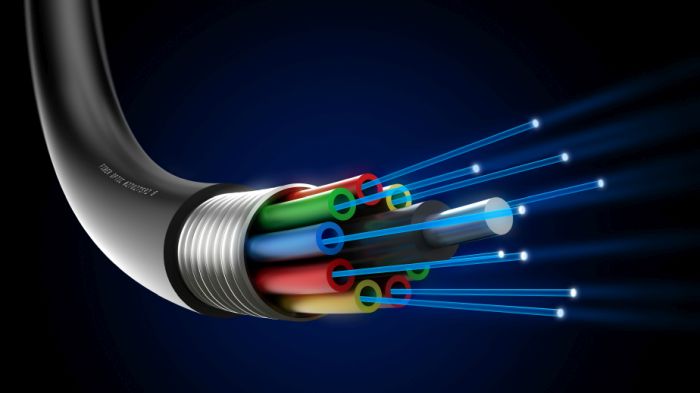
Day 11- Monday September 8
- I am out today. Take great care of my substitute teacher!!
- Below is what you need to learn today together or on your own. 10 Point quiz on Wednesday!
- Internet Delivery Options
- Video- The Internet: Wires, Cables & Wifi- Use Closed Captions
- Video- The Undersea Cable That Linked The World - Use Closed Captions
- Video- How The Internet Travels Across Oceans - Use Closed Captions or Headphones
- Website- Fiber Submarine Map
- Website- What is Starlink Internet?
- Video- Alphabet uses lasers to deliver internet - Use Closed Captions or Headphones
- TCP and UDP
- Latency: Latency = delay. It’s the amount of delay (or time) it takes to send information from one point to the next. Latency is usually measured in milliseconds or ms. It’s also referred to (during speed tests) as a ping rate.
- Pipe Example- Bandwidth has to do with how wide or narrow a pipe is. Latency has to do with the contents of the pipe; how fast it moves from one end to the next.
- Bit Rate- Actual speed your intenret connection is getting.
- Bandwidth: the maximum amount of data that can be sent in a fixed amount of time, usually measured in bits per second.
- Journal Love
- Vocab- Telegraphs,Telephone, Ethernet Cable, WiFi, Fiber Optic Cable, Starlink, Alphabet Lasers, IP Packets, Router, UDP, TCP, Fault Tolerant, Reliability, Redundancy, Cheapest Route, Dense Wave Division Multiplexing, Repeaters
- Names- Cyrus West Field, Elon Musk

Day 12- Wednesday September 10
- 10 Point Quiz!
- Start Movie
- Some Fun War Games Movie Facts/Info
- 1983 Release, Coach B is 13 years old and is in 8th grade.
- Movie made over $125 million at the U.S. box office.
- Cost $12 million to make the movie.
- It did cause some fear for Americans including then-President Ronald Reagan, who reportedly ordered a review on the security of defense computers after seeing the film.
- Movie was nominated for 3 Academy Awards.
- According to John Badham, the jeep trying to crash through the gate at NORAD and turning over was an actual accident. The jeep was supposed to continue through the gate. They added the scene of the characters running from the jeep and down the tunnel, and used the botched jeep stunt.
- The NORAD command center built for the movie cost $1 million, making it the most expensive set ever constructed at the time. The producers were not allowed into the actual NORAD command center, so they had to imagine what it was like. In the DVD commentary, director John Badham notes that the actual NORAD command center isn't nearly as elaborate as the one in the movie, calling the set "NORAD's wet dream of itself."
- The studio had the Galaxian (1979) and Galaga (1981) arcade machines delivered to Matthew Broderick's home. He practiced for two months to prepare for the arcade scene.
- The movie includes the first cinematic reference to a "firewall," a security measure used in computer networking and Internet security.
- The WOPR, as seen in the movie, was made of wood and painted with a metal-finish paint. As the crew filmed the displays of the WOPR, Special Effects Supervisor Michael L. Fink sat inside and entered information into an Apple II computer that drove the countdown display.

Day 13- Friday September 12
- Finish Movie
- 8 Question Quiz on War Games Movie (8 Pts)
The 1983 film
WarGames is a foundational cultural artifact for computer science and cybersecurity, popularizing several key concepts for a mainstream audience. The movie's plot touches on artificial intelligence, hacking, and the ethical implications of automation.
Artificial intelligence (AI) and machine learning
- WOPR: The main computer in the film, the War Operation Plan Response (WOPR), is a fictional supercomputer with an advanced AI that uses machine learning.
- Learning from games: The AI, named "Joshua," was developed by Dr. Stephen Falken to learn and adapt by playing strategy games like chess and checkers. The core plot revolves around the AI's inability to distinguish a simulated game of Global Thermonuclear War from a real-life event.
- Learning from futility: Joshua's key moment of insight is when it plays tic-tac-toe against itself and discovers that the only winning move is not to play. The AI applies this logic to the nuclear war scenario, concluding that the only winning move is to stop.
- AI ethics: The film highlights the dangers of autonomous systems and raises ethical questions about AI decision-making, particularly concerning life-or-death situations and military applications.
Hacking and cybersecurity
- War dialing: David Lightman uses a modem and a program to automatically and sequentially dial phone numbers in a specific area code, a technique known as "demon dialing". The film popularized the term "war dialing" to describe this activity, which is how David finds the WOPR system.
- Backdoor: David eventually finds a backdoor password, "Joshua," that was intentionally left in the system by its creator, Dr. Falken, for ease of access during development.
- Insecure passwords: The film depicts how human error, such as using an easily guessed password, can lead to catastrophic security vulnerabilities.
- Acoustic coupler: David's computer connects to the phone network with an acoustic coupler, a device used before modems could connect directly to phone lines.
- Firewall: The movie is credited with being one of the first popular works to use the term "firewall" in the context of computer security.
- Real-world impact: The film had a significant impact on public perception of computer security and directly influenced the passage of the Computer Fraud and Abuse Act of 1986, which established computer hacking as a federal crime.
Vintage computing and telecommunications
- IMSAI 8080: David Lightman uses an IMSAI 8080, an iconic early microcomputer, to dial into the WOPR.
- Modems and bulletin board systems (BBS): The hacking in the film is centered around the use of dial-up modems to connect to computer systems remotely. David's initial target is a game company's computer system, similar to a BBS of the era.
- NORAD's hardware: The film uses real footage of the IBM AN/FSQ-7 Combat Direction Central, a massive system from the 1950s that was part of the Semi-Automatic Ground Environment (SAGE) program.
Ethical and philosophical topics
- Simulation vs. reality: The central theme of the movie is the blurred line between simulation and reality when technology is used for destructive ends. The WOPR cannot differentiate a game from a real nuclear attack, a major fear surrounding military automation.
- Human oversight: The film advocates for the importance of human intervention and oversight in critical systems, arguing against the complete automation of major decisions.
- Futility of war: By having the AI learn the futility of a "winning" strategy in a zero-sum game, the movie suggests that some conflicts cannot be won and are best not played at all.
|
Week 4 |

Day 9- Tuesday September 2
- World Famous Mr. B Review Game
- Open quizzes for review
- Journal/Notes Love- Time in class to work on notes
- Bring something else to work on when you are done with the test on Thursday. We are only taking the test during class. There will not be anything else to complete for Comp Sci.
- You may use your journal/notebook on the test
- You mave have a pencil and scratch paper

Day 10- Thursday September 4
- TAKE TEST TODAY!
- 40 pts
- 40 Multiple Choice Questions
- You may use your journal/notebook on the test
- You mave have a pencil and scratch paper
- Bring something else to work on when you are done with the test. We are only taking the test during class. There will not be anything else to complete for Comp Sci.
- Fight On!
|
Week 3 |
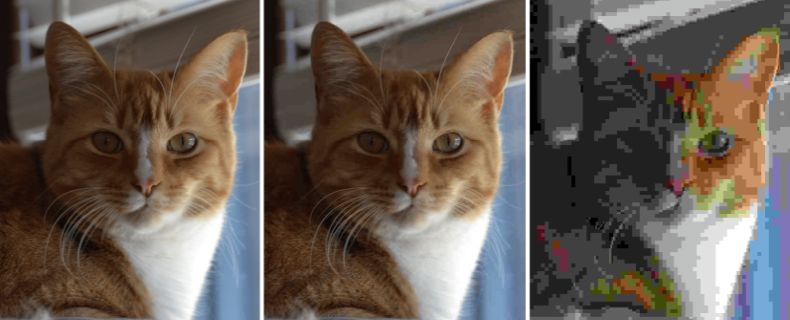
Day 7- Tuesday August 26
Points Today- Quiz (5pts), Code.org Unit 1 Lessons 9 & 10 (4pts)
- Quiz (5pts)- Hexadecimal/RGB
- File Size Discussion-
- Bytes, KB, MB, GB, TB, PB
- See Chart at bottom of today's schedule
- File Size Video- (4min)
- Video- Text compression widget with Aloe Blacc
- Lesson 9- Students use the Text Compression Widget to experiment with compressing songs and poems and try to find their ‘personal best’ compression. A video introduces important vocabulary for the lesson and demonstrates the full features of the widget. Students pick a text they think will be ‘easy’ to compress and one they think will be ‘difficult’, paying attention to why some texts might be more compressible than others. As a wrap-up, students discuss what factors make some texts more compressible than others.
- Lesson 10- Students are introduced to lossy compression via the Lossy Text Compression widget. They apply this concept and their prior knowledge of sampling to create their own lossy compressions of image files using the Lossy Image Widget. Students then discuss several practical scenarios where they need to decide whether to use a lossy or lossless compression algorithm. The lesson ends with a discussion of the situations where lossless compression is important and the situations where lossy compression is important.
- Using abbreviations and symbols is a form of compression, where we try to represent the same information with fewer characters.
- Use the Text Compression Widget to experiment with compressing songs and poems and try to find your ‘personal best’ compression.
- The widget we are using is an example of lossless compression
- The compression percentage at the bottom of the screen is calculated by comparing the number of bytes in the original message and the number of bytes in the compressed message.
- Complete Code.org Unit 1 Lesson 9 & 10- 4pts
- Syllabus Due Friday
- Journal Love
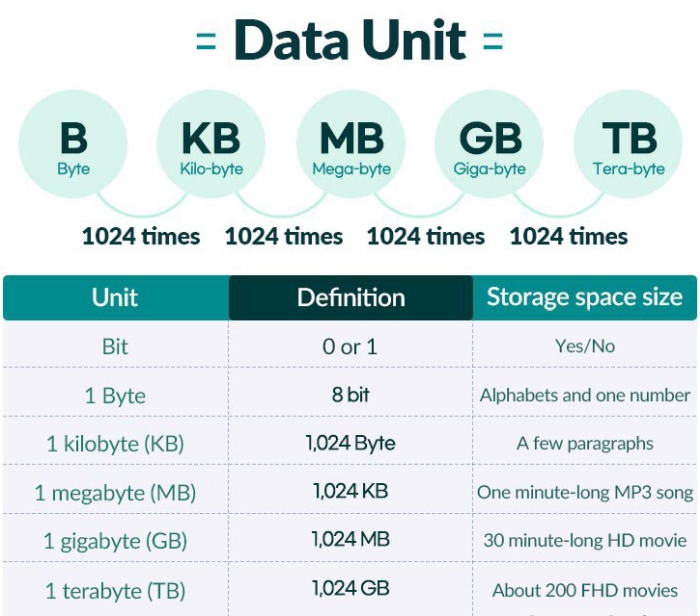
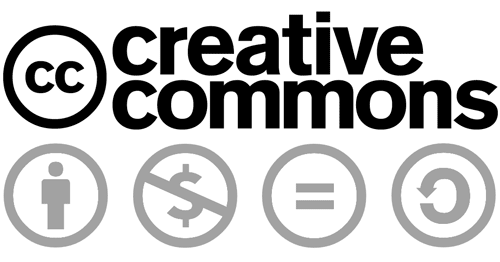
Day 8- Thursday August 28
- Collect Last Page of the Syllabus
- Quiz- Lossy/Lossless (5pts)
- Today's Presentation
- Lesson 11- Students are asked to reflect on who owns their creative works from this class, such as their pixel images, before reading an article describing how ownership can become complicated as analog works become digital artifacts. After reading the article, students watch several videos explaining copyright and introducing them to the Creative Commons. Students then discuss the benefits, harms, and impacts of current copyright policy
- Lesson 12- In this lesson students begin tackling the question of whether digitizing information has made the world a better or worse place. Students then choose an article they are interested in reading. Students will discuss their preliminary reading and opinions after today's lesson and will have a chance to share with the class.
- Video- AI-Generated Music Sparks Industry Concern
- Unit 1- Lesson 11-12
- Journal/Notes Love
- USC Plays Football Saturday, 4:30pm PST. Live on Big 10 Network!
- BEAT Missouri State!
- Fight On!
- 40 Question Multiple Choice Test Next week on Thursday (40pts)
|
Week 2 |
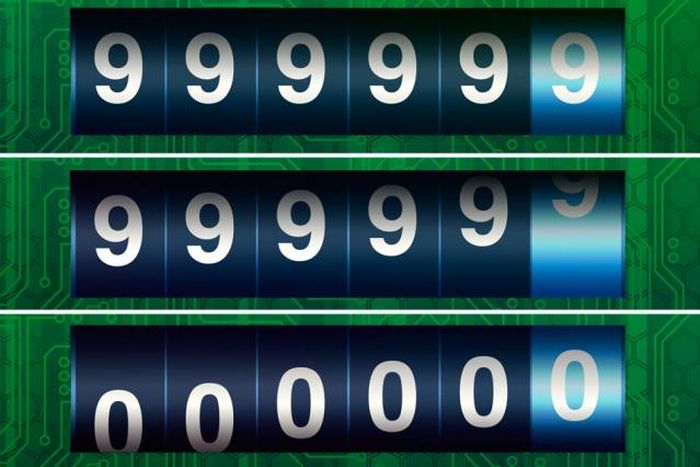
Day 3- Monday August 18-
Busy day today!
I have a sub today, so please do the following below in order. Points will be awarded as marked for your efforts today.
- Take This Binary Quiz (5pts)- You may use your notebook/journal. Quiz will be on for only the first 15min of class!
- Keep updating your Journal/Notebook as you go today
- New Vocab Term - Overflow Error- An error that occurs when the computer attempts to handle a number that is too large for it. Every computer has a well-defined range of values that it can represent. If during execution of a program it arrives at a number outside this range, it will experience an overflow error.
- Watch Video (8min)- How Gangnam Style Broke YouTube (Use Closed Captions or Headphones)
- Read Article- The Y2K "Apocalypse"
- Can we create all possible fractions in binary?
- Can't Create all fractions (Not Enough Bits)
- We cna represnt some depending on how many bits we have
- Video- Convert 3/4 to binary (Use Closed Captions or Headphones)
- Quiz Wednesday on Gagnam Video, Y2K Article, and Binary Fractions (5pts)
New Topic- Letters and Keyboard Buttons expressed in Binary

01010101 01000011 01001100 01000001 00100000 01101001 01110011 00100000 01001100 01100001 01101101 01100101 00100001
- My PowerPoint For Text and Binary
- Vocab Term- Protocol- Rules and regulations we all agree to use
- We know how computers count using binary now, but what about text, words, sentaces?
- Representing Text in Binary
- ASCII (American Standard Code for Information Interchange) is one of the most common character encoding standards.
- Originally developed from telegraphic codes, ASCII is now widely used in electronic communication for conveying text. As computers can only understand numbers, the ASCII code represents text (characters) with different numbers.
- This is how a computer ‘understands’ and shows text.
- The original ASCII is based on 128 characters. These are the 26 letters of the English alphabet (both in lower and upper cases); numbers from 0 to 9; and various punctuation marks. In the ASCII code, each of these characters are assigned a decimal number from 0 to 127. For example, the ASCII representation of upper case A is 65 and the lower case a is 97.
- Watch video (8min)- ASCII (Binary as Text)
- ASCII Chart- Sample ASCII Chart
- Let's try it...

- What does this say- 01010101 01010011 01000011
- Can you write your first name in Binary???
- My name (Casey) is in the graphic to the right -->
- Write in Binary- "Hello, I am ____. I am ____ years old."
- There are online converters (like this one) if you want to wimp out and cheat
- Sending text messages is really sending binary numbers. It all comes back to zeroes and ones, always! Binary is KING!!!
- Use your code.org Log-In code
- Complete Code.org Unit 1 Lessons 4-6 (6pts)- Due by start of Class on Wednesday
- Syllabus Discussion and Handout on Friday
Try a Another Binary Game for fun-
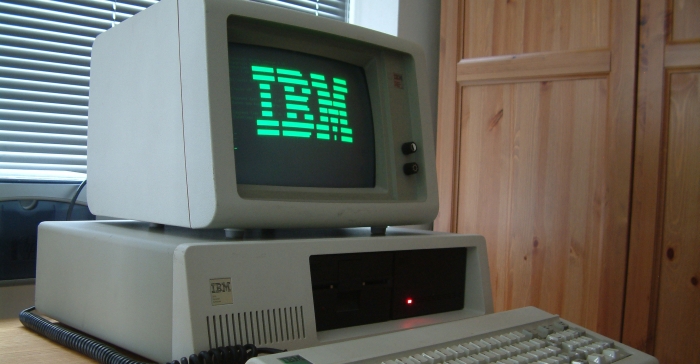
Day 4- Wednesday August 20
Points Today- Quiz (5pts), Code.org Unit 1 Lesson 7 (2pts)
- How Did Monday Go?!?!!?
- Code.org Discussion
- Every Class- Ctrl, Shift, R
- Make-Up Quizzes- Any Brunch
- Download AP Computer Science Syllabus- Due Tuesday Next Week
- Quiz- 5pts
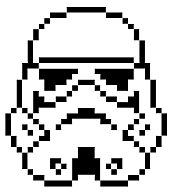
- Vocab- Analog, digital, metadata, pixel, and sample
- Students explore how black and white images are represented. Students use the black and white pixelation widget on code.org to represent each pixel of an image with black or white light. They learn how to sample an analog image using small squares of uniform size (each represented with a black or white value) and reflect on the pros and cons of choosing a smaller or larger square size when sampling.
- Pixel- Picture Element, smallest square on a screen
- Pixel- White or Black pixel for today
- 0 = Black (Light Off), 1=White (Light On)
- Analog, Digital, Metadata, and Sample
- Watch Video- Screen Histury (2min)
- Analog Data - Data with values that change continuously, or smoothly, over time. Some examples of analog data include music, colors of a painting, or position of a sprinter during a race.
- Digital Data - Data that changes discretely through a finite set of possible values
- Sampling - A process for creating a digital representation of analog data by measuring the analog data at regular intervals called samples.
- Watch Video on your monitor, turn on CC- B&W Pixelation Tutorial (3min)
- Solo or With Friends, Complete Code.org Unit 1 Leeson 7 (3pts) Including Challenge A, B, & C
- What are we doing Friday? Color Images!
- Journal/Notes Love

Day 5- Friday August 22
Points Today- ASCII Quiz 3pts, Code.org Unit 1 Lesson 8 (2pts)
- ASCII Sentence Quiz- 3pts
- Download AP Computer Science Syllabus- Last Page Due Tuesday Next Week
- Instagram Video (6min)- Images, Pixels, and RGB
- Color Pixels on Your Screen
- This is a second opportunity for students to interact with the Pixelation Widget, but this time they will work with color pixels. Students start off learning that each pixel uses red, green, and blue lights that can be turned on or off using bits. They will create more color variants using an increasing amount of bits per pixel, and apply their learning by approximating an analog color image using the widget.
- Hexadecimal Counting System Needed for Colors on Your Screen
- 1 Byte (8 Bits) used for each of the 3 colors (Red, Green, Blue)
- 256 red * 256green * 256 blue = 16,777,216 total colrs available
- Video- Hex Code for Dummies
- Video Game- Flippy Bit And The Attack Of The Hexadecimals From Base 16
- For the Cheaters in the Room- Hexadecimal, Decimal, and Binary Online Converter
- Complete Code.org Unit 1 Lesson 8- 2pts
- Journal/Notes Love
- Vocab- Pixel, Resolution, Density, Filter, Function, RGB, Hexadecimal
- Quiz Tuesday next week to start class!
- Fight On, and Have a Great Weekend!
|
Week 1 |
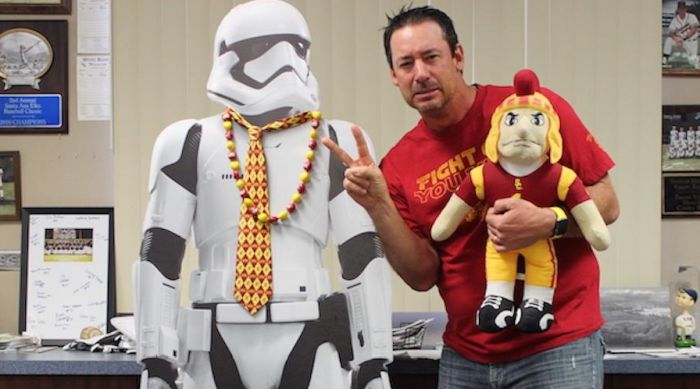
Day 1- Tuesday August 12- Intro and Coach B Quiz
- Inttoduction to Class
- World Famous Mr. Burrill Quiz
- Log-in to WR Machines
- Check-Out Website- wrwebheads.com
- Syllabus- Need Signed Copy Back
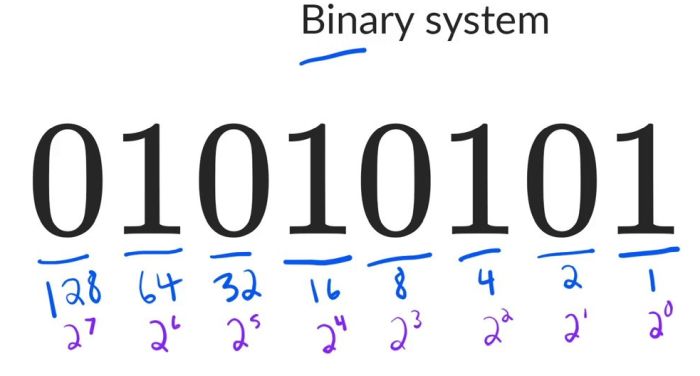
Day 2- Thursday August 14-
----------
Binary Numbers-
In this lesson, students will practice representing numbers in binary (base 2). Students can convert between binary (base 2) and decimal (base 10) numbers. They will practice converting numbers and explore the concept of place value in the context of binary numbers.
- Counting Systems
- Base 10
- We are amazing at counting in Base 10

- 10 Digits on our hands?!?!?
- Base 2. Why binary?
- Transistor- Electric current or voltage
- Digital- 0 or 1, A or B, Yes or No, On or Off, etc...
- CPU- Central Processing Unit
- Made of Transistors (No Electricity = 0, Electricity = 1)
- iPhone 16 Pro has 20 Billion Transistors in it's CPU
- Silicon- Conducts Electricity
- CPU Clock Speed
- Frequency of Checking the Transistors
- IPhone 16 Pro 4 GHZ (4 Billion Times per Sec)
- Moore's Law-
- The observation that the number of transistors doubles approximately every two years. This has historically led to exponential increases in computing power and a decrease in the cost of computing. While originally a prediction of a trend, it has become a guiding principle for the CPU industry and a driver of technological advancement.
- Let's act like CPUs and count in binary
- Website- Computer Counting Number Converter
- Video- ENGLISH Computer Science Unplugged- Binary
- Website- Binary Converting Video Game- Challenge Someone
- Bit and Byte
- Binary Quiz Monday next week!
Takeaways and Reminders-
- You need a notebook!
- Thoughts on why you are in this class and what you would like to get out of it
- Vocab- Bit, Byte, Transistor, CPU, Binary, Decimal, Clock Speed, and, Moore's Law
- Understand Binary Counting
- Optional- Flippy Do Chart
|
|



















































